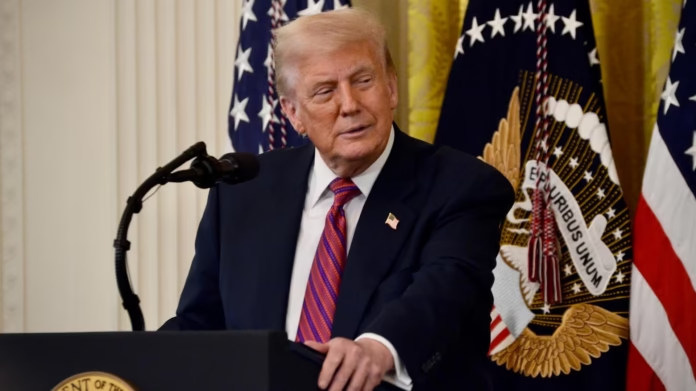The Trump administration’s newly released digital asset strategy confirms its commitment to crypto regulation but offers no update on the long promised U.S. Bitcoin reserve, leaving a gap in one of the most discussed aspects of the president’s blockchain agenda.
Crypto Strategy Arrives, but Reserve Remains a Mystery
On Wednesday, the White House released a 163 page document outlining its national approach to cryptocurrency and digital assets. Framed as the most comprehensive crypto policy report of President Donald Trump’s term so far, the strategy consolidates existing regulatory goals and priorities across financial oversight, innovation policy, and federal agency collaboration.
However, the report notably avoids providing any new detail about how the federal government plans to handle its crypto stockpiles, including the long teased Bitcoin Strategic Reserve. Despite being mentioned in previous executive orders, the reserve was only briefly referenced, on the final page of the report, with no operational details or implementation timeline.
No Clarity on Government Bitcoin Holdings
The idea of a federal Bitcoin reserve has remained vague since its announcement. Trump’s executive order called for separate stockpiles: one for bitcoin and another for all other digital assets. Yet Wednesday’s report made only a passing mention of this initiative, providing no clarity on funding models, strategic intent, or the scale of acquisition.
Officials have previously stated that the reserve would be formed primarily using crypto assets seized by federal law enforcement agencies. That plan received mixed reactions from industry observers who were hoping for a more proactive approach, potentially involving direct market purchases or institutional partnerships.
Bo Hines, one of Trump’s senior crypto advisers, said earlier this month that the executive order required a report on the reserve process. However, he added that the administration was not obligated to release it to the public and may opt not to do so. That remark now appears prescient, as no such report accompanied this week’s broader strategy document.
Congress May Need to Step In
With the White House staying quiet on specifics, legislative momentum may shift to Capitol Hill. Senator Cynthia Lummis, who chairs the Senate Banking Committee’s subcommittee on digital assets, has taken an early lead with her BITCOIN Act. The bill proposes a framework to boost U.S. competitiveness in digital asset innovation and would likely reinforce or accelerate plans for a national Bitcoin reserve.
Still, the legislation has not advanced, and with no fresh backing from the administration, the fate of the reserve remains uncertain.
For many in the crypto industry, this lack of progress is frustrating. Expectations were high that the administration would use the release of its flagship policy roadmap to outline next steps on the reserve. So, instead, the community is left with continued ambiguity around one of the most high-profile elements of the president’s digital asset vision.
Also Read: Trump White House Releases Long Awaited Crypto Report, Calls for Clearer Oversight and Tax Rules
Broader Call to Action for Regulators
Though the report lacked details on the reserve, it did issue a strong call to action for federal agencies. The document encourages regulators to begin implementing crypto policy immediately, even in the absence of finalized legislation.
Specifically, it highlights the roles of the Securities and Exchange Commission (SEC) and the Commodity Futures Trading Commission (CFTC), urging both agencies to use their existing authorities to enable the federal-level trading of digital assets. This directive is intended to move forward with U.S. crypto market structure reforms while broader legislative packages, such as the Clarity Act, continue making their way through Congress.
Tax Reform and Stablecoin Rules Highlighted
The report also includes sections addressing tax reform and stablecoin oversight. On the tax side, the administration’s proposals align closely with those found in Senator Lummis’ digital asset bill. They include establishing thresholds for capital gains taxation and redefining how staking rewards and similar crypto-generated income are handled by the IRS.
Meanwhile, the report reiterates the importance of regulating U.S. stablecoin issuers under the GENIUS Act, which has already been signed into law. The new legislation mandates rules for stablecoin reserves and issuer transparency, forming part of the administration’s goal to make the U.S. a leader in global digital finance.
Industry Reaction and Strategic Implications
Industry leaders welcomed the strategy document as a positive signal of momentum in Washington. Ji Kim, the recently appointed CEO of the Crypto Council for Innovation, praised the report for addressing decentralization, tax reform, stablecoins, and broader competitiveness goals. He described the roadmap as a constructive path forward that shows a long-term vision for American leadership in digital assets.
To understand what people think about Bitcoin right now, check out this article from Bitcoin: Rise or Bubble? 2025 Analysis.
Also Read: Exclusive: Mexico’s antitrust watchdog accuses banks of joint price fixing






